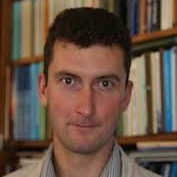Pollutant/Nutrient Transport and Fate under Changing Hydroclimatic Conditions
A special issue of Water (ISSN 2073-4441). This special issue belongs to the section "Hydrology".
Deadline for manuscript submissions: closed (30 November 2019) | Viewed by 33719
Special Issue Editors
Interests: hydrology; water resources; substance transport; land use change; climate change
Special Issues, Collections and Topics in MDPI journals
Interests: hydrology; sediment transport and sediment quality; contaminants fluxes; ecohydrology
Special Issues, Collections and Topics in MDPI journals
Interests: water scarcity; water quality; freshwater salinisation; irrigation; water use; salinity; conjunctive use
Special Issues, Collections and Topics in MDPI journals
Interests: microbial ecology; photosynthetic microorganisms; algae; eutrophication
Special Issue Information
Dear Colleagues,
The water-borne transport and ultimate fate of pollutants and nutrients that are released over various spatial scales (from point sources to diffuse sources) and temporal scales (from pulse inputs to cumulative inputs), can be altered to different degrees depending on the local to regional manifestations of global hydro-climatic change. Such manifestations include changes in average runoff and its spatio-temporal variability (e.g., magnitude and timing of hydrological events and seasonality), as well as changes in (ground)water levels, flow paths and suface water/groundwater interactions. The climate sensitivity of substances may additionally depend on substance-specific intrinsic properties (physical and geochemical) and ambient conditions along the transport pathways. This Special Issue welomes contributions on key challenges in a wide spectrum of complex problems related pollutant/nutrient transport under hydroclimatic change at different scales. Important aspects include, but are not limited to (changes in):
- Water and/or sediment discharge patterns, impacting e.g., mobilization, concentration, and mass flows (suspended, dissolved and total) of pollutants and nutrients.
- Soil moisture, infiltration rates, and leaching conditions, impacting pollutant/nutrient transport through, and retention in, the unsaturated zone.
- Groundwater levels, impacting processes in riparian zones, as well as groundwater occurrence, transport pathways, and geochemical conditions (pH, oxygen level) in the upper soil layers, which are commonly more permeable and pollutant/nutrient-loaded.
- Permafrost extent (thaw), ground frost, and snow accumulation/melt patterns, impacting (sub)surface flowpaths.
- Dissolved and total organic carbon (DOC/TOC) levels, impacting e.g., the transport of metals in dissolved (bioavailable) form.
- Hydrological and biogeochemical conditions in recipient lakes, wetlands, and river deltas, impacting pollutant/nutrient storage and degradation.
Assoc. Prof. Dr. Jerker Jarsjö
Assoc. Prof. Dr. Sergey Chalov
Dr. Josefin Thorslund
Dr. Zorigto Namsaraev
Guest Editors
Manuscript Submission Information
Manuscripts should be submitted online at www.mdpi.com by registering and logging in to this website. Once you are registered, click here to go to the submission form. Manuscripts can be submitted until the deadline. All submissions that pass pre-check are peer-reviewed. Accepted papers will be published continuously in the journal (as soon as accepted) and will be listed together on the special issue website. Research articles, review articles as well as short communications are invited. For planned papers, a title and short abstract (about 100 words) can be sent to the Editorial Office for announcement on this website.
Submitted manuscripts should not have been published previously, nor be under consideration for publication elsewhere (except conference proceedings papers). All manuscripts are thoroughly refereed through a single-blind peer-review process. A guide for authors and other relevant information for submission of manuscripts is available on the Instructions for Authors page. Water is an international peer-reviewed open access semimonthly journal published by MDPI.
Please visit the Instructions for Authors page before submitting a manuscript. The Article Processing Charge (APC) for publication in this open access journal is 2600 CHF (Swiss Francs). Submitted papers should be well formatted and use good English. Authors may use MDPI's English editing service prior to publication or during author revisions.
Keywords
- Hydroclimatic change
- Pollutant and nutrient transport
- Sediment transport
- Surface water
- Groundwater
- Wetlands
- River deltas
- Permafrost thaw
- Extreme events
- Water quality change








